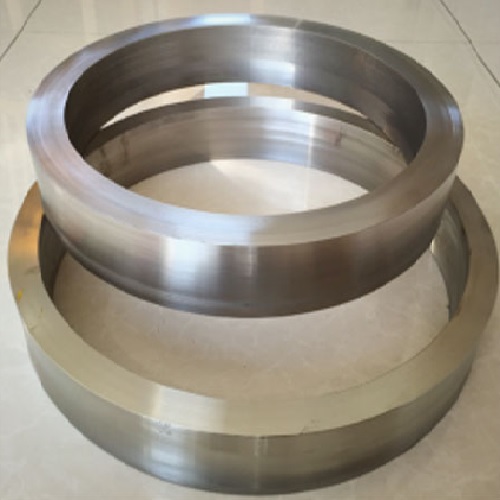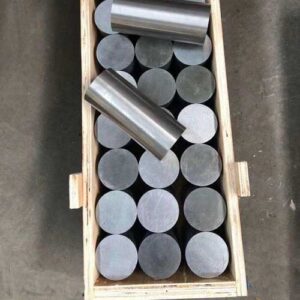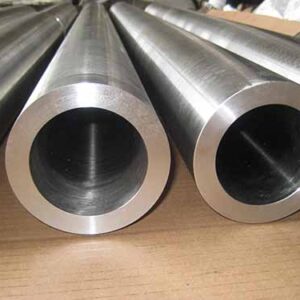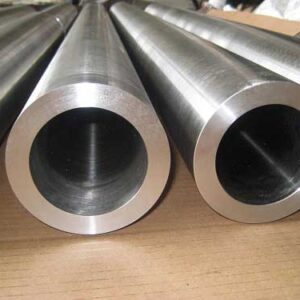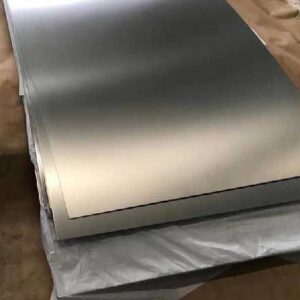Hastelloy G3 alloy (UNS N06985 MA-G3)
Hastelloy G3 is a nickel-molybdenum alloy with excellent resistance to pitting, corrosion, and stress-corrosion cracking plus, thermal stability superior to that of alloy G3. In addition, this nickel steel alloy has great resistance to knife-line and heat–affected zone attack. Alloy G3 also withstands sulfuric, acetic, formic and phosphoric acids, and other non-oxidizing media. Furthermore, this nickel alloy has excellent resistance to hydrochloric acid at all concentrations and temperatures. Hastelloy G3’s distinguishing feature is its ability to maintain excellent ductility during transient exposures to intermediate temperatures. Such exposures are routinely experienced during heat treatments associated with fabrication.
Limiting Factors of Hastelloy G3:
Alloy G3 has poor corrosion resistance to oxidizing environments, therefore, it is not recommended for use in oxidizing media or in the presence of ferric or cupric salts because they may cause rapid premature corrosion failure. These salts may develop when hydrochloric acid comes in contact with iron and copper. Therefore, if this nickel steel alloy is used in conjunction with iron or copper piping in a system containing hydrochloric acid, the presence of these salts could cause the alloy to fail prematurely.
In what forms is Hastelloy G3?
-
Sheet
-
Plate
-
Bar
-
Pipe (welded & seamless)
-
Fittings (i.e. flanges, slip-ons, blinds, weld-necks, lapjoints, long welding necks, socket welds, elbows, tees, stub-ends, returns, caps, crosses, reducers, and pipe nipples)
What are the characteristics of Hastelloy G3?
-
Maintains excellent ductility during transient exposures to intermediate temperatures
-
Excellent resistance to pitting, corrosion and stress-corrosion cracking
-
Excellent resistance to knife-line and heat-affected zone attack
-
Excellent resistance to acetic, formic and phosphoric acids and other non-oxidizing media
-
Resistance to hydrochloric acid at all concentrations and temperatures
-
Thermal stability superior to alloy G3
Hastelloy G3 Chemical compostion:
|
Ni
|
Mo
|
Fe
|
C
|
Co
|
Cr
|
Mn
|
Si
|
65.0 min
|
28.5
|
1.5
|
.01 max
|
3.0 max
|
1.5
|
3.0 max
|
.10 max
|
Ti
|
W
|
Al
|
Cu
|
|
|
|
|
.2 max
|
3.0 max
|
.50 max
|
.20 max
|
|
|
|
|
Physical Properties:
Properties
|
Metric
|
Imperial
|
Density
|
8.3 g/cm³
|
0.3 lb/in³
|
Melting point
|
1343ºC
|
2450ºF
|
In what applications is Hastelloy G3 used?
Chemical processes
Vacuum furnaces
Mechanical components in reducing environments
Fabrication with Hastelloy G3
Problems associated with fabrication of alloy G3 components should be minimized with alloy G3 due to its improved thermal stability. A low carbon content permits alloy G3 to be used in the as-welded condition. Hastelloy G3 has good overall forming and welding characteristics. This alloy can be forged or otherwise hot-worked, providing that it is held at 2250° F for a sufficient amount of time to bring the entire piece to temperature. Since it is a low carbon alloy, the use of lower hot finishing temperatures may be necessary to achieve grain size control. It may also be formed by cold working. Although it does work-harden somewhat rapidly, G3 alloy components can be made using all common cold forming techniques. All common welding techniques may be used with alloy G3, however, oxyacetylene and submerged arc welding processes are not recommended when the fabricated item is to be used in corrosive service.
ASTM Specifications:
Pipe Smls
|
Pipe Welded
|
Tube Smls
|
Tube Welded
|
Sheet/Plate
|
Bar
|
Forging
|
Fitting
|
B622
|
B619
|
B622
|
B626
|
B333
|
B335
|
B564
|
B366
|

